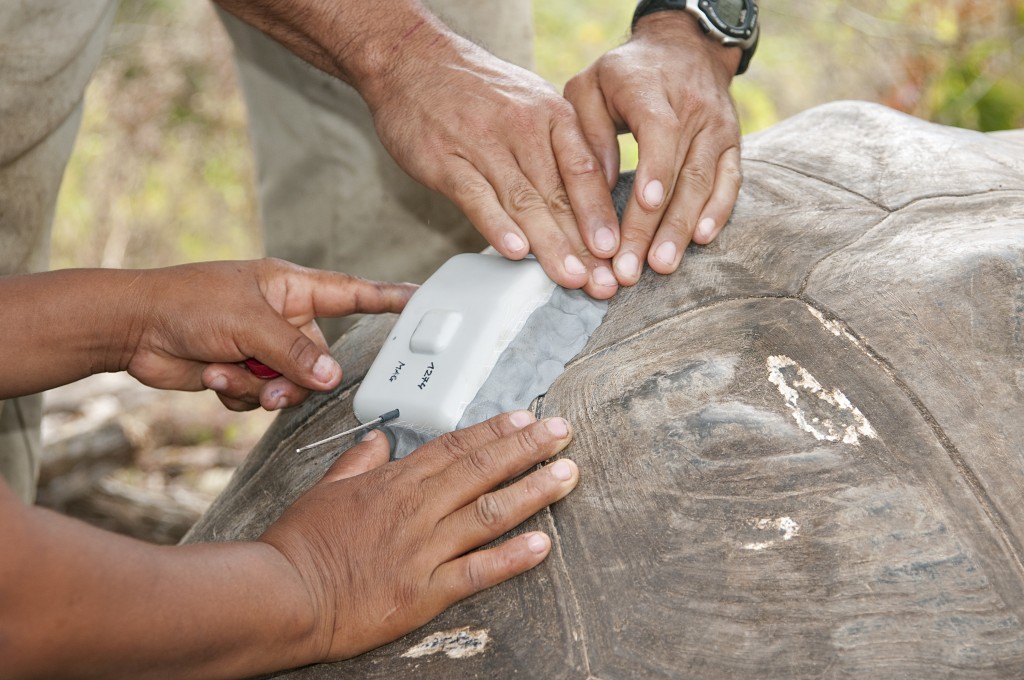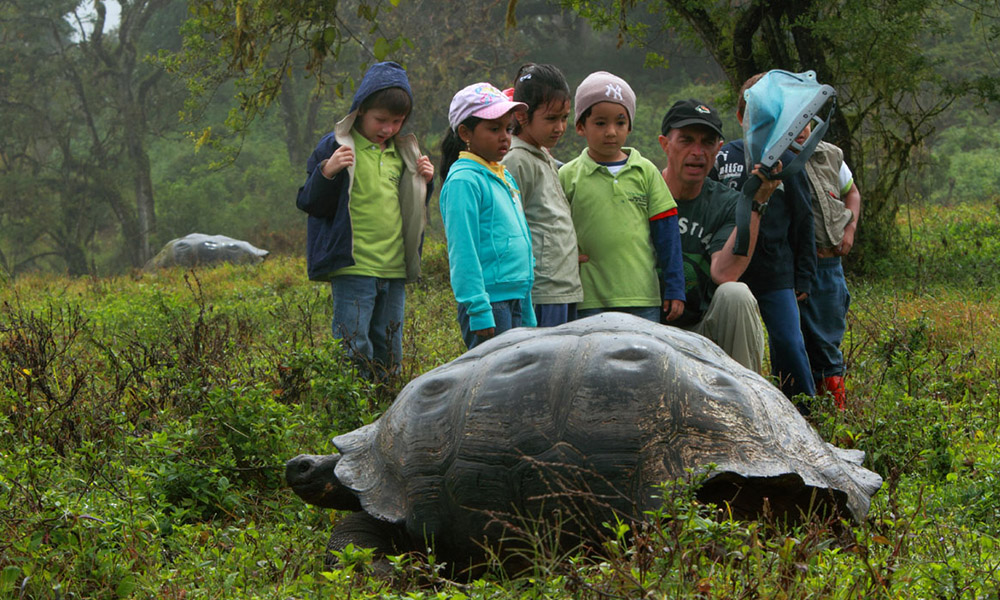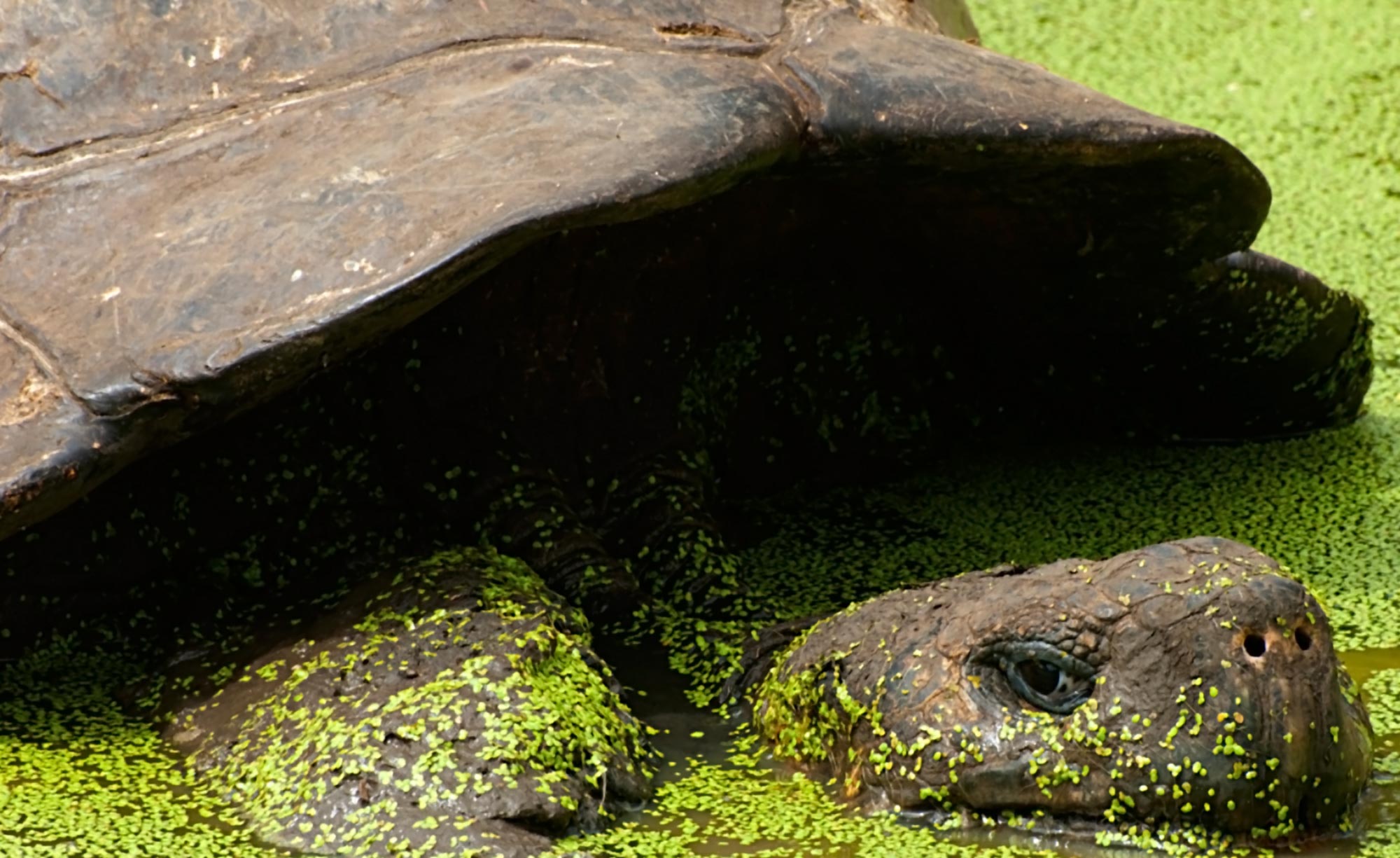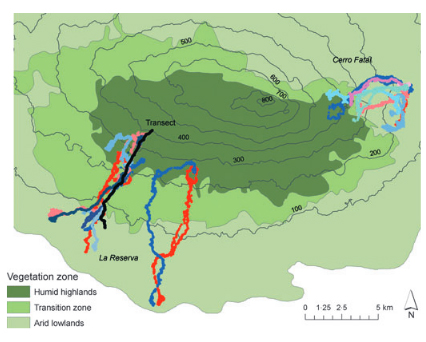Now we have our key question for scientific investigation – How can we help conserve the population of Galapagos giant tortoises?
What information do we need?
Recognising the need to find information to help conserve this iconic species, and the importance of understanding long distance migration of the tortoises, the Galapagos Tortoise Movement Ecology Project (GTMEP) was set up in 2009 to help the Galapagos National Park answer some key scientific questions, including:
- How much space do tortoises need?
- How, when, where and why do Galapagos tortoises migrate?
- What factors disrupt these movements?
- What habitat resources are critical for survival?
- What are the ecological roles of Galapagos tortoises i.e. why are they important for the environment?
- How are tortoise populations changing over time, particularly in response to threats and conservation management?
Tracking tortoises
In order to provide answers to these questions, the programme uses a variety of techniques to study the tortoises, including direct observation of tortoise behaviour and a more high-tech approach of tracking tortoise movements using Global Positioning System (GPS) tracking.

Researchers attach a GPS tracker to a tortoise shell © Steven Blake
GPS tracking involves gluing a tag onto the tortoise shell (also known as a carapace). This GPS tag can tell us their location and their movements every hour, every day. It records the latitude, longitude, date and time, as well as other environmental aspects of the tortoise such as how active the tortoises are.
This information is recorded and can be plotted on a map. The movements of these tagged tortoises, and also many more species around the world, are accessible on a website called Movebank. This data can be plotted on Google Earth to create images like this:
From studying this data from the GPS tags, the researchers are able to track tortoise migrations and help conserve the tortoises by making sure that they are not disturbed from their natural paths. As of July 2014, 83 tortoises have been tagged on the islands of Santa Cruz, Isabela and Espanola.
In addition to scientific research, the program is also working with schools and educators both in Galapagos and worldwide to educate and inspire the next generation of conservation scientists.

Dr. Steve Blake and a giant tortoise © Christian Ziegler
Previous: Tortoise Trackers – The Galapagos Giant Tortoise




